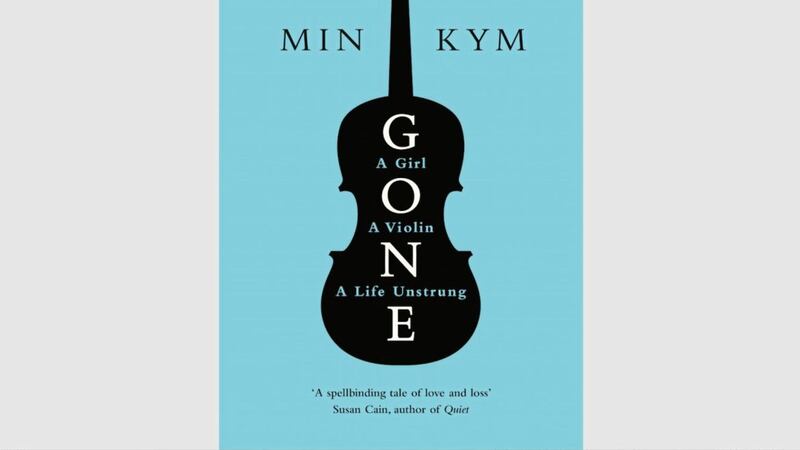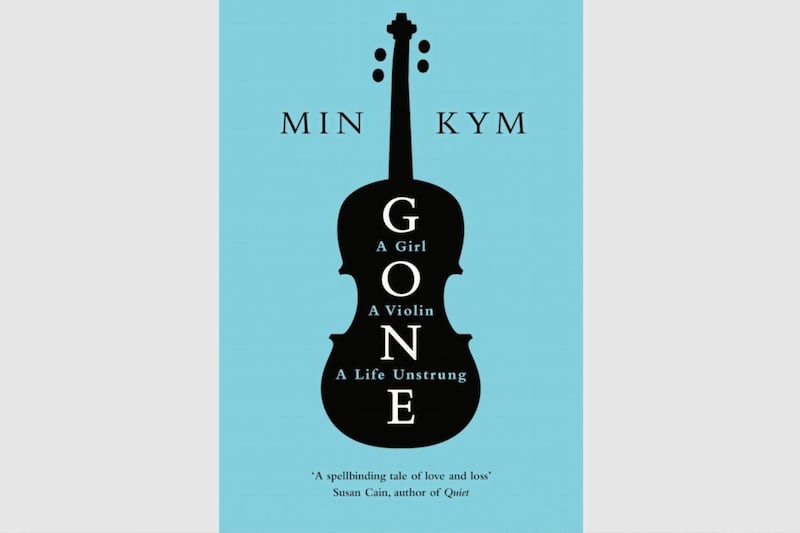BOOK OF THE WEEK
Gone: A Girl, A Violin, A Life Unstrung by Min Kym, published in hardback by Viking
THE theft of a £1.2 million Stradivarius violin from a cafe at Euston Station threw its owner, Korean-born child prodigy and violin genius Min Kym, into the spotlight in 2010. But her suffering continued long after the headlines had died down. In this heartfelt memoir, the acclaimed violinist recalls her years as a child prodigy from a traditional Korean family growing up in the UK, whose incredible talent was discovered at the age of six. But it's the description of the intense relationship she has with her Strad which makes this story come alive, how it fitted her body, how she felt like she was putting on Cinderella's slipper, how it bore marks of vulnerability, rather like its owner. Only then can the reader realise that the theft of that violin was so much more than a physical, financial matter. It was recovered nearly three years later, but they were to be only briefly reunited. This fascinating true story is one from the heart.
Hannah Stephenson
FICTION
Ithaca by Alan McMonagle, published in hardback by Picador
Jason Lowry is 11, living in a small Irish town during the 2009 recession, and spending a misspent summer with a strange girl who daydreams herself on trips to ancient Greece and Egypt. Ostensibly, the boy is trying to find out the name of his father from his heavy-drinking, negligent mother – but has to tackle the alluring threats of petty crime, underage sex and self-harm with his newfound accomplice. This debut novel from Galway-based writer Alan McMonagle cleverly deals with topics too adult for Jason to fully comprehend, despite the boy’s zinging observations of the town’s residents. It could easily be bleak, but McMonagle’s dark humour, wry one-liners and direct descriptions makes the children’s search for ‘Ithaca’ oscillate from appalling to heartbreaking. Comparisons to The Butcher Boy by Pat McCabe are inevitable and despite Jason’s recklessnes, it’s hard not to be on his side.
Natalie Bowen
NON-FICTION
Notes On Blindness: A Journey Through The Dark by John Hull, published by Profile Books
IF YOU are a sighted person and wonder what it might be like to lose the visual world, the gripping Notes On Blindness will challenge your preconceptions about the condition and leave you reeling at the complexities of a life deprived of sight. Writing movingly of how he finally came to identify as a blind person and relinquish those things every sighted person takes for granted, the academic Hull – who died in 2015 – has a flair for evoking the sensations, ironies and even moral quandaries of the blind (how to escape tedious conversations at parties when you can't see a friend to head for?). First published in 1990 under the title Touching The Rock, this edition ties in with the release of its Bafta-nominated cinematic namesake, and contains an introduction by Cathy Rentzenbrink. As an account of dealing with disability, it remains as visceral and lucid as it did when first published.
Rachel Farrow
Gastrophysics: The New Science Of Eating by Charles Spence, published in hardback by Viking
PROFESSOR Charles Spence once won the Ig Nobel prize for his work on the crunch sound crisps make and how this gives clues about how stale they are. The Ig Nobel honours achievements that make people laugh and then think. This book is packed with new ways of thinking about food and eating. Spence shows how we eat with our minds as well as our mouth. He reveals the impact that smell, sound, sight and touch, as well as taste, have on our perception of what we are eating. You'll discover why certain shades of food or plate will make food taste sweeter, how the arrangement of salad on the plate affects the price customers are willing to pay for it and why upmarket restaurants are Googling their customers before they arrive. Foodies will discover new ways to make their dinner parties more memorable and couch potatoes will find out why they eat more while watching TV. There's plenty to digest in this quirky and revealing book.
Bridie Pritchard
The Raqqa Diaries: Escape From Islamic State by Samer, published in hardback by Hutchinson
WRITING under the pseudonym Samer, this 24-year-old Syrian from Raqqa has documented life under the occupation of Daesh in all of its devastating detail, risking death to smuggle his notes to the outside world. Growing up under the Syrian regime, he saw hope flare in the revolution of 2011, before Daesh's occupation of his city created a situation even more oppressive than before. The narrative is all too familiar, but it is Samer's personal account that shocks: he is forced to watch as friends are beheaded for minor transgressions; his father is killed in one of the regime's airstrikes; his beloved city is brought to its knees. There is little redemption, but much dignity, as he attempts to survive and resist, trapped between Daesh, Assad and foreign powers, all alike in their total disregard for the citizens of Raqqa. Brutal and essential.
Adam Weymouth
CHILDREN'S BOOK OF THE WEEK
The Ladybird by Bernadette Gervais, published in hardback by Laurence King
JUST in time for the Easter holidays, when little bug-hunters will be out in force, comes this beautifully crafted, yet simple picture book that will teach children a surprising amount about these wonderful insects. Starting with a lift-the-flap, showing the ladybird's actual size compared to a coffee bean, this slim volume is packed with fascinating factoids and colourful illustrations. Did you know, for example, that ladybirds' two red wing covers are called elytra? Or that they can fly up to 2km high?! They play dead to defend themselves by rolling on their backs and pulling their legs in (as the little ones may soon discover), they're born with blank yellow elytra, which slowly turn red and show spots over a couple of hours (all illustrated in a thrilling series of three round flaps) and, the gardener's friend, they can eat more than 50 aphids a day. Topped off with a brilliant 'spot' the difference, The Ladybird will intrigue and delight.
Kate Whiting



